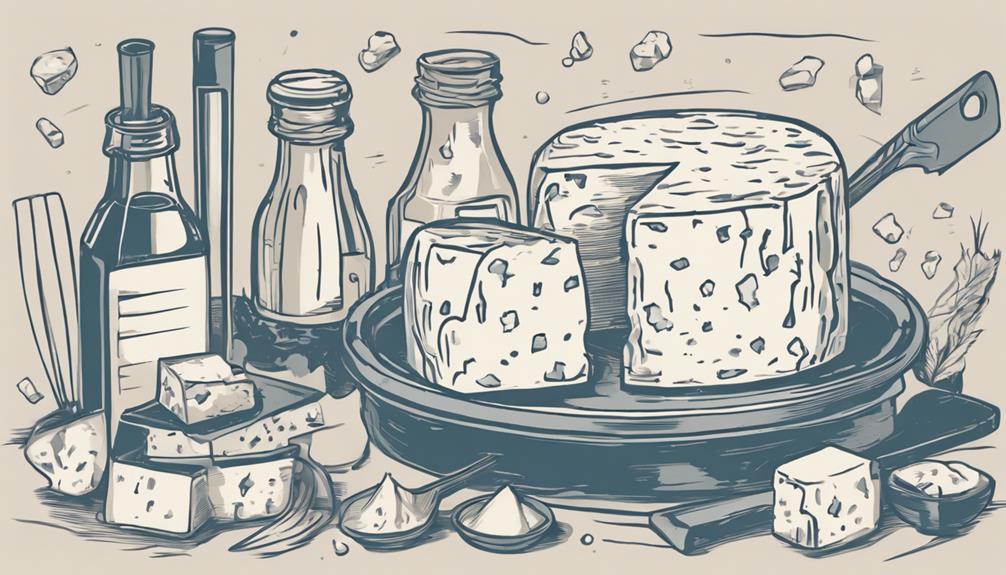See All: Cheese Making
Watch How To Do This Here…
YES! You can make cheese at home. Take our FREE 4-Part video training series to simplify cheesemaking for everyone. No waste. No overwhelm. No missing steps. You can make delicious, healthy cheese, even if you only have access to grocery store milk and regular kitchen equipment…
Click Here To Watch Step By Step Now
“Hi there! I’m opening a small artisanal cheese shop in New York City, and I plan to make my own blue cheese for sale. I’ve read bits and pieces about the process, but I’m still pretty confused. Could you explain how blue cheese is made, from start to finish?” Cheers, David, New York, USA.
What’s The Process For Making Blue Cheese?
Hey David, congratulations on your new artisanal cheese shop! Making blue cheese is such a rewarding process and having your own distinctive variation will surely make your shop stand out. Let’s break it down from start to finish.
Step 1: Selecting the Milk
The journey of blue cheese begins with some high-quality milk. This could be cow, goat, or sheep milk, depending on the flavor profile you desire. Each type of milk brings its unique characteristics to the cheese.
- Cow Milk: Most common, subtle flavor.
- Goat Milk: Tangier and slightly sweeter.
- Sheep Milk: Rich and full-bodied, leading to a creamy texture.
Step 2: Pasteurizing and Cooling the Milk
Pasteurizing kills any unwanted bacteria while ensuring a controlled fermentation process. Heat the milk to a specific temperature, usually around 72-75°C (161-167°F), and then cool it down to the inoculation temperature, which is around 30°C (86°F).
Step 3: Adding Starter Cultures and Blue Mold
Once the milk is at the right temperature, add starter cultures and Penicillium roqueforti, the magic ingredient that gives blue cheese its characteristic blue veins and pungent flavor.
- Starter Cultures: These bacteria convert lactose into lactic acid, aiding in curd formation.
- Penicillium Roqueforti: Typically added in small amounts, this spore proliferates throughout the cheese as it ages.
Step 4: Adding Rennet
Rennet is an enzyme crucial for coagulating the milk, forming the curds. For blue cheese, use a single-strength animal rennet or a suitable microbial alternative if you’re aiming for a vegetarian product. Stir it into the milk and let it sit until it thickens into a custard-like consistency.
Step 5: Cutting the Curds
When the curds are firm, use a long knife to cut them into small pieces, typically about the size of walnuts. This helps to release the whey (the liquid part) from the curds.
Step 6: Draining the Whey
Once cut, the curds need to settle and further firm up. After cutting, gently stir them to encourage more whey separation. After a bit of resting, scoop out the curds and transfer them to a cheesecloth-lined colander to drain off the remaining whey.
Step 7: Salting the Curds
Salt acts as a preservative and also enhances flavor. For blue cheese, salt the curds heavily and mix them well before transferring them to the molds. The salt will also help to control the growth of unwanted bacteria.
Step 8: Molding and Pressing
Place the curds into molds. Unlike some other cheeses, blue cheese isn’t heavily pressed, as we want a looser curd structure to allow the blue mold to develop internally. Lightly press by hand, ensuring the curds knit together.
Step 9: Piercing the Cheese
Here’s where blue cheese gets its signature look. About a week into the aging process, pierce the cheese with long needles or skewers. This introduces oxygen into the interior, creating conditions for Penicillium roqueforti to thrive and form those beautiful blue veins.
Step 10: Aging the Cheese
Place the pierced cheese in a cool, humid aging environment, often referred to as a “cave”. Temperature should be around 10-12°C (50-54°F) with high humidity levels of about 90-95%. The aging period can vary but is generally around 3-6 months.
During this time, the blue mold spreads, and the flavors deepen. Frequent flipping of the cheese ensures an even aging process.
Step 11: Wrapping and Storing
Once the cheese has aged to your liking, wrap it in cheese paper or foil to preserve its moisture content. Blue cheese tends to stay good for several weeks, even months, when stored in proper conditions.
Tips for Success
- Monitoring pH Levels: Ensuring the correct pH level at different stages can profoundly affect the cheese’s texture and flavor.
- Sanitation: Keeping tools and surfaces clean helps avoid contamination and unexpected flavor changes.
- Experimenting: Variances in milk type, aging times, and mold quantities allow you to explore unique flavors.
So, David, those are the basic steps! Each batch will teach you something new and exciting. Remember, patience and precise control over conditions are your allies in creating a fantastic blue cheese.
Final Thoughts…
David, starting your cheese-making journey is incredibly exciting. By closely monitoring each step and experimenting with variables, you’ll create truly unique blue cheese that reflects your personal touch and the character of your shop. Thank you for asking such an insightful question, and best of luck with your artisanal endeavors!
Return To: Cheese Making
Free Step By Step Cheese Making Videos…
YES! You can make cheese at home. Take our FREE 4-Part video training series to simplify cheesemaking for everyone. No waste. No overwhelm. No missing steps. You can make delicious, healthy cheese, even if you only have access to grocery store milk and regular kitchen equipment…

